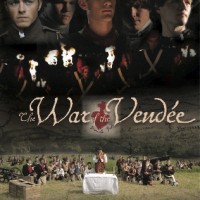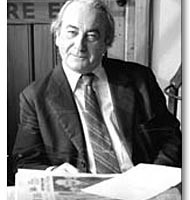Frodo versus Robespierre, by Joseph Pearce
Politics and the new Dark Age, by Bradley J. Birzer.
Pierre Gaxotte, uno studioso contro il giacobinismo, di Marco Respinti.
Benemeritamente, la milanese Mondadori ha ristampato La rivoluzione francese. Dalla presa della Bastiglia all’avvento di Napoleone, di Pierre Gaxotte.
Nato il 19 novembre 1895 a Revigny-sur-Ornain, nel dipartimento della Meuse, nella Francia nordorientale, Pierre Gaxotte entra à l’École normale supérieure nel 1917. Nel 1920 vi consegue l’agrégation in Storia che, nel sistema scolastico francese, consente l’accesso alla docenza nel settore pubblico, mentre contemporaneamente ottiene una licenza in Scienze. Professore di liceo, stringe amicizia con Joseph Arthème Fayard (1866-1936), figlio del fondatore dell’omonima e prestigiosa casa editrice francese – Joseph-François Arthème Fayad (1836-1895) -, attraverso il quale viene presentato a Charles Maurras (1868-1952), il noto intellettuale della Destra monarchica e fondatore dell’Action française, di cui diventerà segretario.
Nel 1894, infatti, Fayard figlio, subentrato al padre nella direzione della maison, sposta gl’interessi della casa editrice dalla letteratura popolare ad autori decisamente conservatori come Maurice Barrès (1862-1923) e cattolici quali Paul Bourget (1852 -1935). Accanto a ciò, Fayard si lancia pure nell’affascinante mondo del feuilleton – un genere all’epoca popolarissimo, anzi pop -, monopolizzandone presto il mercato grazie al successo dei 32 romanzi della serie Fantômas, personaggio ideato nel 1911 da Marcel Allain (1885-1969) e da Pierre Souvestre (1874-1914), al centro pure di altri 11 romanzi composti poi dal solo Allain oramai “vedovo” di Souvestre. A Fayard si deve peraltro anche il lancio mondiale delle opere del prolifico scrittore belga Georges Simenon (1903-1989), padre del commissario Maigret.
Ebbene, alla ricerca costante di nuovi spazi editoriali e sempre al centro di coraggiose operazioni culturali, nel 1920 Fayard crea la collana “Grandes Études historiques” e ne affida la direzione a Gaxotte.
Fayard non è un editore neutro. Ha la netta percezione che la narrazione della storia – scritta sempre dai vincitori – e la produzione culturale – appannaggio di chi detiene il potere – necessiti, soprattutto del suo Paese, la Francia, emendamenti fondamentali rispetto ai cliché dominanti in cui trionfa la vulgata repubblicano-laicista e lo spirito massonico liberal-socialisteggiante. Per questo mette la propria casa editrice al servizio di una imponente opera revisionista che, coscientemente, concede ampi spazi all’ambiente umano, politico e culturale in quel contesto maggiormente dotato degli strumenti intellettuali adatti a rompere il monopolio del “pensiero unico”: la Destra, di cui proprio Gaxotte è un esponente noto.
DENTRO UN VESPAIO, CON CORAGGIO
Ora, la Destra in Francia è un vero dedalo. Ai tempi di Gaxotte e di Fayard è la sovrapposizione di anime diverse, persino di “correnti” contrastanti. In essa confluiscono, un po’ alla rinfusa, orientamenti e ispirazioni anche molto distanti tra loro, dai monarchici legittimisti ai cosiddetti orleanisti, dagli eredi del bonapartismo e quelli dello spirito vandeano, dai cattolici fedeli al Soglio di Pietro ai positivisti conservatori convinti che la religione – il cattolicesimo – svolga una essenziale funzione sociale di reazione e di supporto all’ideale monarchico teorizzando però che non è necessario crederci davvero (Maurras fu uno di loro, ma non così tutta l’Action française). Una Destra, insomma, in cui convivono, pur se a fatica, una “vera Destra” e una “Sinistra della destra”, quest’ultima essendo la somma – direbbe il più importante pensatore contro-rivoluzionario del secolo XX, il brasiliano Plinio Corrêa de Oliveira (1908-1995) – di molte “false destre”.
Il vizio di fondo degli ambienti più discutibili - e talora francamente impresentabili – di quella galassia è del resto il nazionalismo, sovente smaccato, che, nonostante una certa retorica ivi diffusa, è ideologia tra le ideologie. Per questo, infatti, alcuni di quegli ambienti finiranno per guardare con favore e dunque per affiancare i movimenti nazionalistici europei dell’epoca, sfociati poi in movimenti e in regimi fascisti (o fascistici). Del resto, nel brodo di cultura da cui nasce il “mussolinismo” – prima ancora del vero e proprio fascismo italiano – vi sono cospicui ingredienti francesi, dal sindacalismo rivoluzionario di Georges Sorel (1847-1922) al cosiddetto “boulangismo” (dal nome del generale Georges Boulanger, 1837-1891), vale a dire il movimento di opposizione che ,tra il 1886 e il 1889, accarezzò l’idea del golpe nazionalista.
Gaxotte però no. Aveva idee più chiare. Nuotò in quel mondo, militò tra i maurassiani, partecipò alle attività editoriali di Fayard che fiancheggiavano la “rivoluzione nazionale” auspicata dal leader dell’Action française, diresse i due settimanali politico-letterari lanciati dall’amico Arthème – Candide e Je suis partout, quest’ultimo divenuto, dopo la “gestione Gaxotte”, persino antisemita -, eppure non vi annegò mai. Gaxotte è stato infatti uno di quegli uomini di cultura e di scienza che non hanno mai disdegnato l’impegno politico, né nascosto le proprie idee controcorrente, ma che di certi ambienti hanno più che altro cercato di servirsi: per fare del bene e per indirizzare, anche a costo del fallimento.
Non scordiamo, del resto, che il privilegio offerto dal riflettere su determinati fatti a distanza di tempo è negato a chi i fatti li vive quando essi accadono. E che se questo certamente non assolve mai dalle responsabilità personali, altrettanto certamente non carica gli uomini liberi degli errori commessi da altri, anche magari molto prossimi. Gilbert Keith Chesterton (1874-1936) – per non citarne che uno – subì fortemente, all’inizio, il fascino del fascismo italiano; e suo cugino Arthur Kenneth Chesterton (1896-1973) fu invece smaccatamente fascista, antisemita e in collusione intellettuale con i nazisti. Per l’Action française di Maurras passarono comunque moltissimi intellettuali cattolici francesi certo non sospetti: il più noto di tutti fu il filosofo Jacques Maritain (1882-1973), che come molti altri poi se ne staccò, ma come scordare che in morte di Maurras tra i suoi laudatores figurò pure il Nobel T.S. Eliot (1888-1965)?
Read complete article in La Bussola Quotidiana
Who was the most right-wing man in history?, by Paul Johnson.
The recent death of Michael Wharton, aged 92, raises the interesting question: who was the most right-wing person who ever lived?
Many thought he was. I am not sure he did himself. The last time I saw him, when he was already very old, I asked him how he saw himself and he replied, ‘Moving to the right.’ He said this as if regretting a life of obstinate radicalism, though as the honorary editor-in-chief of the Feudal Times and Reactionary Herald for more than half a century it was always difficult to get to the right of him (I tried) in any issue on the political agenda. On other matters he resembled Gilbert Pinfold (or his creator, Evelyn Waugh) and ‘abhorred … everything that had happened in his lifetime’.
Wharton’s own hero was Colonel Charles de Laet Waldo Sibthorpe (1783–1855), MP for many years for Lincoln, a borough represented previously by his elder brother, father, great-uncle, great-great-uncle, and after his death by his eldest son. He served in the Peninsular war, in the 4th Dragoon Guards, and inherited Canwick Hall and the family estate in Lincolnshire; by his wife, Maria, heiress of Ponsonby Tottenham, he acquired another estate in Ireland. The DNB says, ‘He belonged to the ultra-Tory and ultra-protestant party, and was the embodiment of old-fashioned prejudice.’ He was one of the diehard group of 53 Tories who censured free trade in 1852. His one parliamentary success was to get the proposed grant to Prince Albert reduced by half on the grounds that he promoted ‘foreign influence’, and he opposed the Great Exhibition for the same reasons. Otherwise he sounds pretty tame, though one would like to know what was meant by the statement, ‘His appearance was extraordinary and his dress attracted attention.’
Twentieth-century equivalents of Sibthorpe are increasingly rare. An undergraduate friend of mine who made lists of them used to award the prize to Sir Waldron Smithers, an eccentric traditionalist who sat for seats in Kent from 1924 to his death in 1954. His place was taken by Captain Waterhouse MP, who for some years led a cave of diehards called ‘the Suez Group’. But I heard it said that Waterhouse, though ‘splendid’ on the Middle East, was ‘unreliable’ on some issues, being ‘not sound’ on animal rights. Julian Amery, indeed, told me he was ‘well to the right’ of the captain. But then he himself was ‘unsound’ on capital punishment, since his brother John had been shot in the Tower in 1945. Few people have ever been ‘sound’ across the whole spectrum. Even the Duke of Cambridge was not, by his own admission, a last-ditcher. As he put it, ‘They say I am against reform. I am not against reform. There is a time for everything. And the time for reform is when it can no longer be resisted.’ Ramrod-straight and unflinchingly regimental, did he not harbour a cosy, sentimental streak? He was once heard to observe, ‘fists on his knees’, that ‘family prayers are a damned fine institution, by God!’
There is always a weak spot in every reactionary. C.S. Lewis told me, when ambling through Addison’s Walk at Magdalen, that Joseph de Maistre was the ideal right-winger. He thought the most important official in the state was le bourreau, the executioner, ultimate guarantor of order. There were three divine laws of society: monarchy is a necessity; the monarch must be absolute; his duty is to uphold papal supremacy. De Maistre is the only political philosopher who is consistently shrewd. He coined the axiom, ‘Every country has the government it deserves.’ But Lewis thought de Maistre’s wit was his weakness: ‘A true reactionary has no sense of humour. You must be able to propose the impossible with a straight face.’ Michael Wharton, of course, would not have agreed with that. He took the Chestertonian line that all truth was encoded in a joke, a view shared by Ronald Reagan, the most successful right-winger of modern times, who communicated entirely through one-liners and had over 5,000 of them, by heart, for every conceivable occasion.
Read complete article in Catholic Education Resource Center


